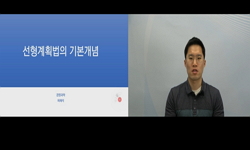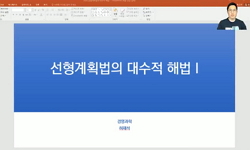We investigate the optimal wing geometry and kinematics of a rhinoceros beetle in hovering motion for minimum power consumption. The original wing kinematics of a hovering beetle is measured using high speed cameras. Based on the measured wing kinemat...
http://chineseinput.net/에서 pinyin(병음)방식으로 중국어를 변환할 수 있습니다.
변환된 중국어를 복사하여 사용하시면 됩니다.
- 中文 을 입력하시려면 zhongwen을 입력하시고 space를누르시면됩니다.
- 北京 을 입력하시려면 beijing을 입력하시고 space를 누르시면 됩니다.
https://www.riss.kr/link?id=A106015659
- 저자
- 발행기관
- 학술지명
- 권호사항
-
발행연도
2018
-
작성언어
Korean
- 주제어
-
KDC
550
-
자료형태
학술저널
- 발행기관 URL
-
수록면
570-574(5쪽)
- 제공처
-
0
상세조회 -
0
다운로드
부가정보
다국어 초록 (Multilingual Abstract)
We investigate the optimal wing geometry and kinematics of a rhinoceros beetle in hovering motion for minimum power consumption. The original wing kinematics of a hovering beetle is measured using high speed cameras. Based on the measured wing kinematics, numerical simulations are conducted using an immersed boundary method. Numerical results indicate that the enhancement of vertical force and reduction of aerodynamic power requirement due to twist of hindwings are less than 3% as compared to their rigid counterparts, and the effect of elytra on the force generation is negligible. Therefore, we consider rigid and flat hindwings for optimization. We develop a predictive aerodynamic model which predicts the force generation and power requirement of the flapping wing. Optimal wing kinematics and geometry are obtained applying this model together with a hybrid of a clustering genetic algorithm and a gradient-based optimizer. We find optimal solutions for the minimizations of aerodynamic and mechanical power consumption, respectively. Optimization results showed that optimal wing kinematics and geometry for mechanical power consumption than for aerodynamic power consumption are closer to those of a rhinoceros beetle.
목차 (Table of Contents)
- Abstract
- 1. 서론
- 2. 연구 방법
- 3. 결과 및 토의
- 4. 결론
- Abstract
- 1. 서론
- 2. 연구 방법
- 3. 결과 및 토의
- 4. 결론
- 참고문헌
동일학술지(권/호) 다른 논문
-
페이즈필드법 결과 형상의 경계에 대한 확산계수 하한값의 관한 연구
- 대한기계학회
- 김철웅(Cheolwoong Kim)
- 2018
-
- 대한기계학회
- 김정환(Jeong Hwan Kim)
- 2018
-
- 대한기계학회
- 정영석(Youngsuk Jung)
- 2018
-
- 대한기계학회
- 배명환(Myung Hwan Bae)
- 2018




 DBpia
DBpia






